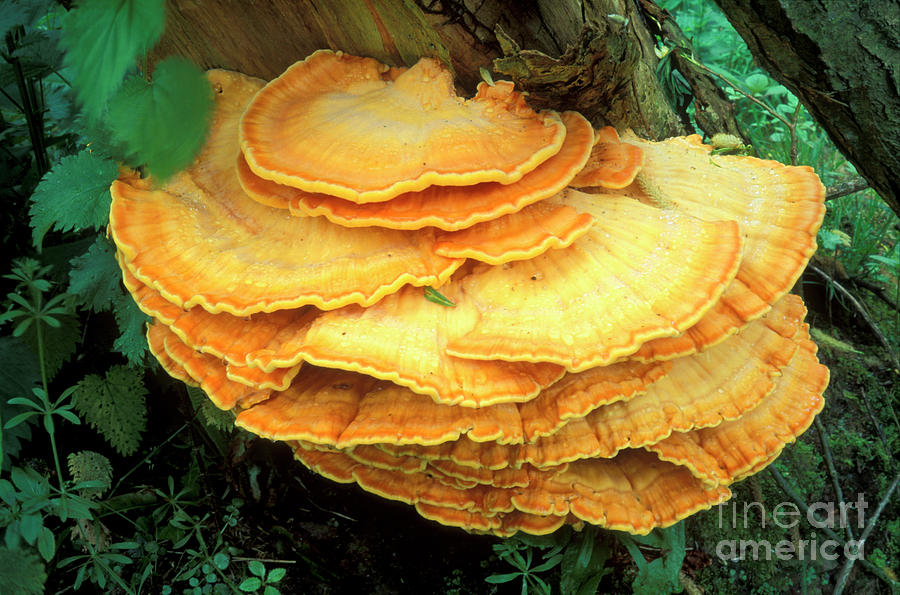
Bracket Fungus Photograph by Simon Fraser/science Photo Library Fine
The Hairy Bracket fungus was described scientifically in 1789 by the Austrian mycologist Franz Xavier von Wulfen (1728 - 1805), who gave it the binomial name Polyporus hirsutus. In 1924 American mycologist Curtis Gates Lloyd (1859 - 1928) transferred this species to the genus Trametes, establishing its currently-accepted scientific name.

Bay Nature Magazine How Can You Tell It's a True Turkey Tail? Fungi
The visible portion of a bracket fungus consists of the fruiting, or reproductive, body. Such structures may be an extremely long-lived and woody, adding a new layer of living fungal matter at the base of the structure each year.

Bracket fungus 6 BlenderBoom
Bracket and crust fungi are as varied in size, colour and texture as cap-and-stem mushrooms, but their habitat range is much more restricted: they grow on living or dead trees. (Some pored fungi can grow either as brackets or with central stems, and they are included here.) Also included are a few gilled members of the family Polyporaceae.

Bracket Fungus stock image. Image of parasite, environment 80835181
Bracket fungus is a common type of fungus that grows on trees, and while many species of bracket fungus are not edible, there are several types that are suitable for human consumption. The following are some of the most common types of edible bracket fungus: Hen of the Woods (Maitake) - This mushroom is commonly found in Japan and North America.

Bracket fungus 5 BlenderBoom
bracket fungus (shelf fungus) Any of a large family (Polyporaceae) of common arboreal fungi that have spore-bearing tubes under the cap. Bracket fungi are usually hard and leathery or wood-like and have no stems. They often cover old logs and their parasitic activity may kill living trees. Some are edible when young.

Bracket fungus 9 BlenderBoom
The beefsteak fungus, a well-known bracket fungus, is actually a member of the agarics. Other examples of bracket fungi include the sulphur shelf, birch bracket, dryad's saddle, artist's conk, and turkey tail.

Edible fruiting body of bracket fungus Fistulina hepatica (beefsteak
Edible Autumn Summer View Full Size Image The Birch Polypore, Fomitopsis betulina. This common white bracket fungus has many uses and has been utilised by humans for thousands of years. Watch our videos on YouTube Please note that each and every mushroom you come across may vary in appearance to these photos. Fruiting Body

bracket fungus Stuffed mushrooms, Wild mushrooms, Edible wild mushrooms
A polypore is a fungus that forms large fruiting bodies with pores or tubes on the underside. The term comes from the Greek words poly, meaning "much" or "many," and poros, meaning "pore." The pores are part of the reproductive structure of these fungi, housing the spore-producing cells.

Bracket fungus found in local wood December 2009. Thank you for
Learn how to identify some of the most common species of polypore found in the UK with expert forager Dave Hamilton.

Bracket fungus 1 BlenderBoom
Polypore mushrooms are also called Bracket fungi or Shelf fungi because they characteristically produce fruiting bodies that are bracket or shelf-shaped. These fruiting bodies are tough, sturdy, and woody and are called conks. The brackets can range from a single row of a few caps to several rows of mushroom caps.

Bracket Fungus Info Does It Hurt Plants And How Long Does Bracket
Inonotus hispidus or the shaggy bracket is indeed a bracket-like fungus, with fuzzy (not quite actually shaggy) fruiting bodies growing out of the trunks of certain hardwoods in North America, Europe, and Asia. The fungus is familiar to foresters and orchardists as a serious tree disease capable of causing a white rot that weakens trees to the.

Bracket Fungus Info Does It Hurt Plants And How Long Does Bracket
And here's one of the other common shelf fungi to perpetuate throughout the year, releasing it's reproductive spores (sporulating) during spring. It can be large, lumpy, but unfortunately inedible which is a shame due to the potential size it can reach. The Lumpy Bracket (Trametes gibbosa) is found in woodland exclusively growing on dead.

Bracket Fungi Stock Image B250/1619 Science Photo Library
Shop Like A Billionaire, Come & Check Everything At A Surprisingly Low Price. Come and check everything at a surprisingly low price, you'd never want to miss it.

Bracket fungus 2 BlenderBoom
All edible wild fungi MUST be cooked. Reishi is a parasitic fungi that occurs on living conifers (especially eastern hemlock and western hemlocks) and saprobic on the deadwood of conifers. Ganoderma means having a shinyor lustrous skin; tsugae means hemlock (Tsuga). Ganoderma tsugae is closely related to Ganoderma lucidum and the two are.

Bracket Polypore Fungi Photograph by Dr Keith Wheeler/science Photo Library
This page titled 2.5: Bracket Fungi is shared under a CC BY-NC 4.0 license and was authored, remixed, and/or curated by George M. Briggs ( Milne Library) . If you are observant and spend much time hiking in the woods you are sure to encounter a bracket (shelf) fungus, fruiting bodies of wood decay fungi that are found both on standing and.

Bracket fungus 5 BlenderBoom
Belonging to the family of polypores, shelf mushrooms, also called bracket fungi, offer many benefits to those who use them. Common edible shelf fungi include chicken of the woods, hen of the woods, and ox tongue. Inedible fungi, like artist's conk, can be used in making teas and dyes.